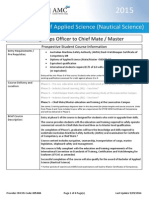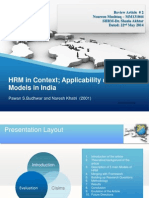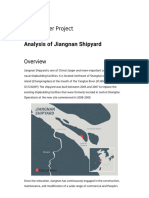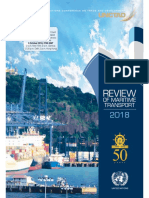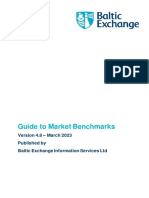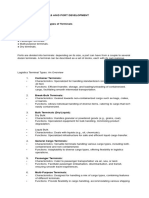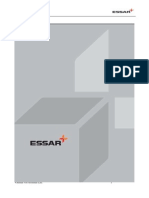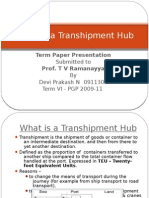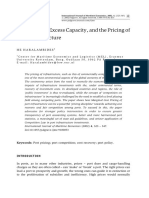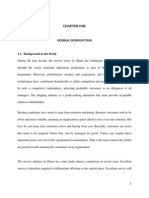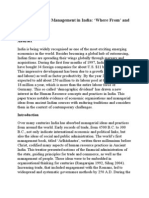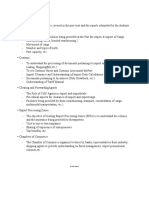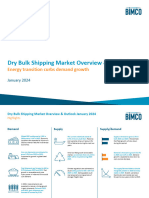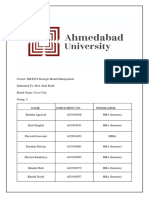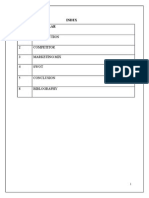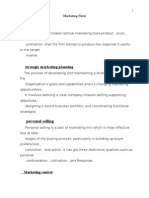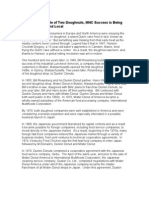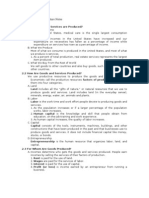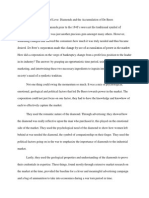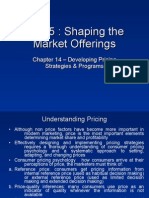Consumer Behaviour Exercise (D)
We interviewed 10 people about our product Coca-Cola. We used a discussion
based tool, where each of us spent significant time with the consumer. The
following are the impressions we get after the interview under various heads.
The Coca Cola drink is readily available at most retail outlets. It is at these
locations that the customers come into contact with the product. Many of them
told us that on an average they do not specifically go to a store to buy the
product, but the purchase happens many times when they are in store for buying
other items. For example a family is buying monthly provisions at the start of the
month, they eventually end up also buying Coca-Cola.
Some others, especially people who are less than 25 years of age have told us
that on an average they consume the drink once or twice a week, especially after
a game of cricket or football. One student whom we interviewed told us that the
drink is consumed at least thrice a week especially when socialising with peers
on the campus between classroom breaks.
Few of them told us that during an event if Coke was the main sponsor for the
event, they eventually ended up consuming more of the product during that
period. This can be attributed to higher exposure to advertisements and also
higher visibility of the product during such events.
Amongst the people that we interviewed, we got a sense that there was no
specific loyalty to the product Coke. Many of them bought the product either
because it was the only available drink in the store or the product was placed in
a manner such that people noticed it first. They were indifferent to the drink, i.e.
to say if offered Pepsi or any other soft drink, they would not mind drinking the
same. In multiplexes or food chains like McDonalds, the only drink offered is
Coke. Therefore people eventually end up buying the drink. In other words we
asked if the consumer did not find Coke in a particular store would he go to
another store where Coke can be found, the answer was in the negative. Most of
them (7 people) told us that they would end up buying any other soft drink that
was available.
On the other hand when we asked people about the pricing of the product, i.e. if
the price of Coke were to increase by a margin of Re. 1, would they continue to
buy the product, they replied it depends on the availability of other rival drinks
on in the store. Seven people were indifferent while three of them told us they
had developed a liking towards Coke and hence would continue to stick to the
product. Here again we draw an inference that people who have had a long
association with the product, especially city bred youngsters who have had the
experience of the product since childhood, generally tend to develop a taste and
brand loyalty. Many of the subjects had more than 9 years of association with the
product. But interestingly, not all of them displayed the loyalty to the brand
because many of them had sporadic interaction and hence could not develop a
strong brand liking to Coke.
We also probed the consumers to tell us, of all the drinks that they had during a
year on an average how much of coke was consumed. But most of them were
unable to recollect this figure. Many of them had seasonal highs and lows.
�Especially during summers or post a game, people preferred to have Coke while
most of them preferred tea during their snack break.
We also asked regarding the consumption pattern over a period. While many of
them had no big changes in their frequency of consumption, some urban
respondents told us that they had cut down on the frequency of drinking Coke.
This is because many of them have come to appreciate that a sugary drink like
Coke is not good for health and hence have reduced the frequency. This is an
area of concern for the product, where they need to re position themselves
amongst urban crowd and remove the impression that Coke is bad for health.
One important point to observe here is that the availably of the drink at different
retail outlets is one of the major factors for the product to sell. Generally
consumers have found that Coke is ubiquitous. Their distribution systems are
good and the product is stocked even in very small towns and villages. Thus
whenever a person has explicitly asked for a Coke, he has never got a response
saying it was out of stock.
Primarily the following are the perceived uses of the product as expressed by the
consumer.
As
As
As
As
a thirst quencher
a refreshing drink
an accompaniment to food
a mixer for liquor
Having said the things above, the consumer experience of the product is good.
He has no complaints and has felt the consumption pleasurable, energizing and
refreshing.
Below are graphs depicting the consumer analysis variables and demography.
Gender
Age
3
8
Male
Female
3
4
Age
21-25
25-30
30-35
�Occupation
Occupation
Student
Reason for buying
Easy Availability
0.7
Price
0.7
Packaging
0.3
Taste
0.2
Brand
0.2
0
0.1 0.2 0.3 0.4 0.5 0.6 0.7 0.8
Working
Positioning
Positioning is about creating a mind space in the consumers mind about the
product. Coca Cola being one of the older brands, has an advantage with
respect to positioning itself. The brand recall in the prospects mind is very high.
In fact Coke as a product is ubiquitous. It has a geographic footprint across the
globe and the brand is recognisable for its soft drink.
It is important to note that Coke has a global positioning strategy. It has not
positioned itself differently in different regions. In many of the regions it is the
number one cola drink. But in todays ever changing competition, one must
ponder if Coke should change its strategy and go more local with respect to
positioning itself. Especially in developed markets, many urban consumers are
becoming more health conscious. This could be a cause of concern for Coke,
which is perceived as unhealthy. Therefore before any competitor takes
advantage of this concern, it is important that Coke tries to reposition itself
either by launching new products or diversifying into healthier options. In recent
times, Coke has taken steps in this direction. First there was a Diet Coke
launched, which was low on calories. More recently, Coke Zero was launched in
six markets of the company, India, US, Mexico, China, Brazil and Japan. This is a
sugar free drink and it is aimed at health conscious consumers. Thus by
constantly innovating, Coke is on the right path to re position itself as not only a
dark coloured cola but rather a product that also has healthier variants.
As we see it, Coke has a two pronged approach to further strengthen its position
product differentiation and cost leadership. Through its advertisements Coke
creates a sense of pride in the consumers. Differentiation is achieved through
perceived superior quality and high brand image. Cost leadership is achieved
through economies of scale and operational efficiencies such as better
distribution networks and manufacturing systems.
�Coke has positioned itself as an integral part of peoples lives. Though the
consumption levels in the Indian market is not as high as in other regions of the
world, Indians on average consume only 12 eight-ounce bottles of Coke a year
compared with 230 in Brazil and 92 bottles globally, Coke as a brand is well
known in the subcontinent. Through its advertisements, Coke positions itself very
strongly in the minds of its consumers.
Some recent positioning advertisements in India are
as a beverage enjoyed by the entire family together Saath Khao
Khushiyaan Badao
as a message of hope umeedon whale Dhoop, sunshine Wali Asha
Through these ads Coke creates a sense of intimacy with its consumers by
evoking memories and experiences that bring happiness and hence a higher
brand recall/ loyalty. In conclusion we can say that Coke has successfully played
the role of a market leader- successfully defending against close rivals like Pepsi
and also continuously evolving with new products hence positioning itself
strongly.
http://www.business-standard.com/article/companies/coca-cola-launches-cokezero-114091900891_1.html
http://www.digitalimpulse.in/insights/coca-cola-india-marketingstrategy/#.VCL7YvmSwVt
http://online.wsj.com/news/articles/SB1000142405270230487030457749009241
3939410

